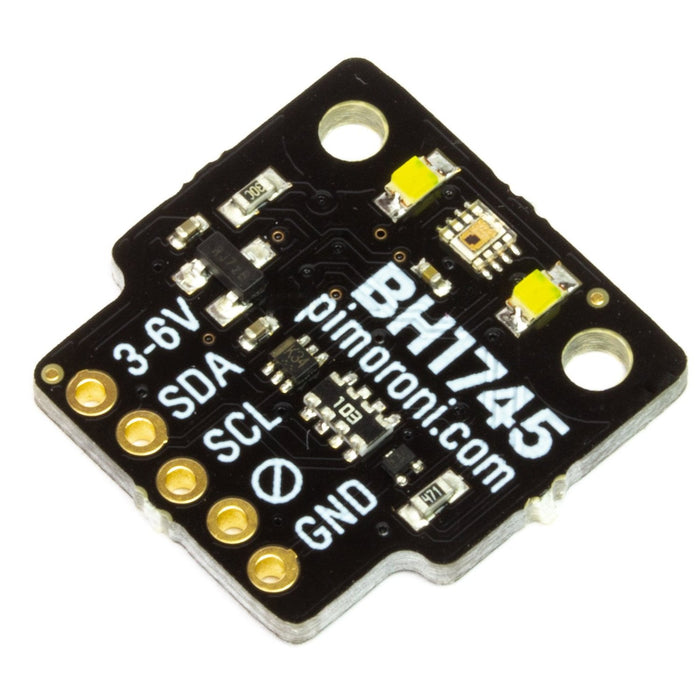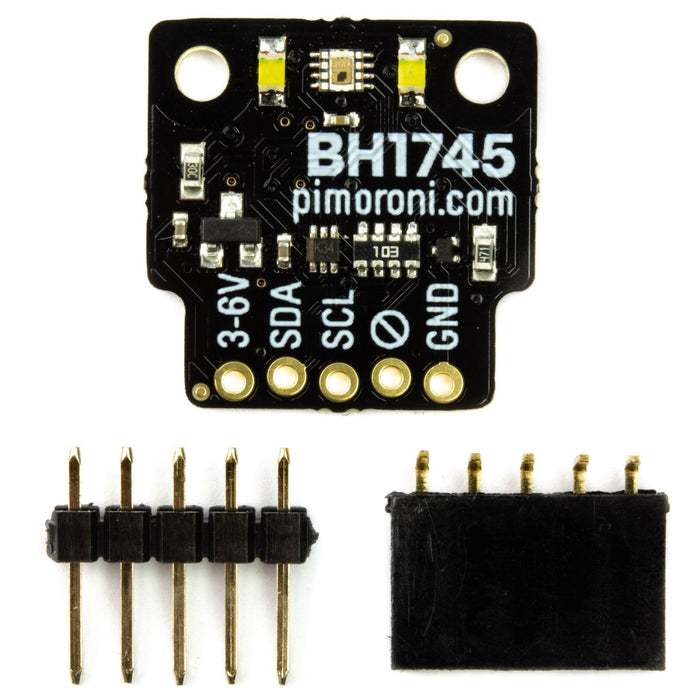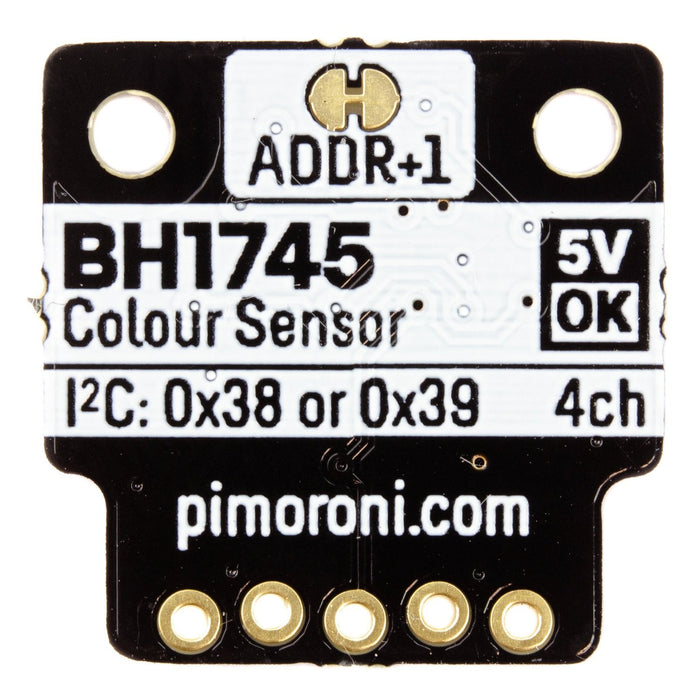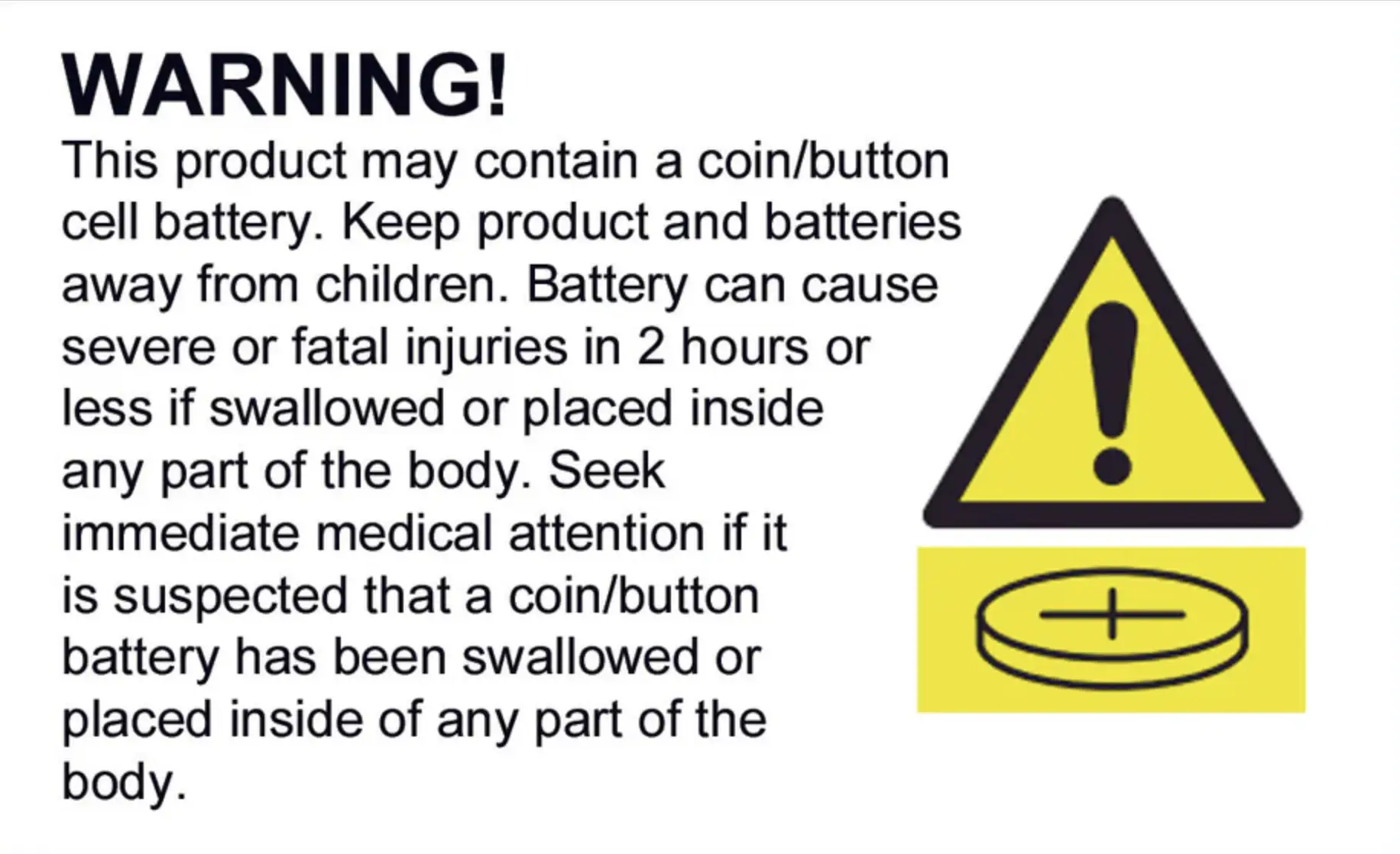
BH1745 Luminance and Colour Sensor Breakout
We have ✅ 2 available of the PR-PIM375 in our Sydney warehouse.
A really sophisticated and accurate colour and luminance sensor breakout that's Raspberry Pi and Arduino compatible. As well as detecting RGB colour and light level, it has added bells and whistles like 50/60Hz light noise rejection, a wide detection range, and two illumination LEDs.
This type of sensor is the same as you'd find in phones, tablets, and laptops where they're used to detect ambient light temperature and adjust the colour temperature of the display accordingly.
The BH1745 Luminance and Colour Sensor Breakout has an I2C interface and is 3.3V or 5V compatible. Like our other Pimoroni breakouts, we've designed it so that you can solder a piece of right-angle header onto it and then pop it straight onto the bottom left 5 pins on your Raspberry Pi's GPIO header (pins 1, 3, 5, 6, 9).
It's also compatible with our fancy new Breakout Garden, where using breakouts is as easy just popping it into one of the six slots and starting to grow your project, create, and code.
Features
- BH1745 Luminance and Colour Sensor Breakout
- Two white illumination LEDs
- Red, green, blue, and luminance measurements
- 0.005 to 40,000 lx detection range
- 50/60Hz light noise rejection
- IR cut filter
- 16 bit data output
- 3.3V or 5V compatible
- I2C interface, with address select via ADDR cuttable trace (0x38 or 0x39)
- Reverse polarity protection
- Raspberry Pi-compatible pinout (pins 1, 3, 5, 7, 9)
- Compatible with Raspberry Pi 3B+, 3, 2, B+, A+, Zero, and Zero W
- Python library
- Datasheet
Kit includes
- BH1745 Luminance and Colour Sensor Breakout
- 1x5 male header
- 1x5 female right angle header
Software
We've put together a Python library that you can use to read data from your BH1745 Luminance and Colour Sensor Breakout, and an easy one-line installer to install everything.
Our software does not support Raspbian Wheezy.
Notes
- The trace between the solder pads (marked ADDR) can be cut (carefully with a craft knife) to change the I2C address from the default of 0x38 to 0x39, meaning that you can use up to two sensors on the same Raspberry Pi or Arduino. If cut, the pads can be bridged again by soldering to reset the address to 0x38.
- Dimensions:
The BH1745 Luminance and Colour Sensor Breakout appears in the following collections:



